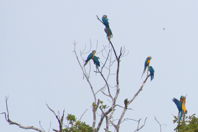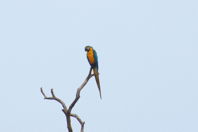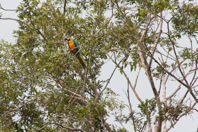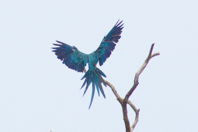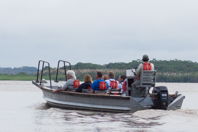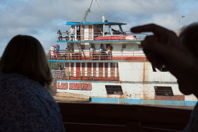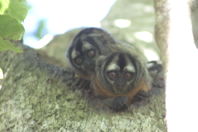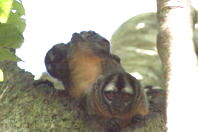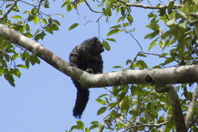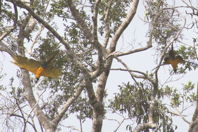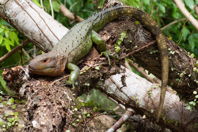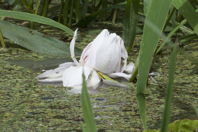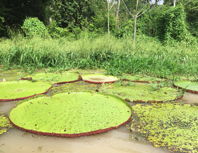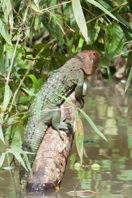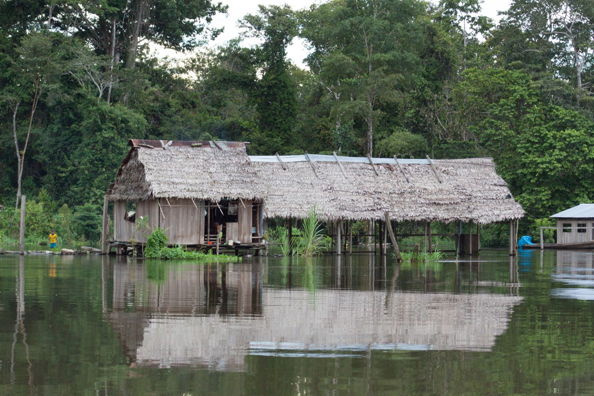
|
|
When the water rises too high, you abandon your house and go stay with friends who live on higher ground (larger image). |
Friday, April 17, fourth day in Perú ( I )
On the Amazon
Today, we got up early. My journal says, «Wake-up call was at 0600, but we were up before that drinking coffee in the bar. Aat 0630, we hopped onto a skiff for a macaw-hunting expedition. Lots of birds.
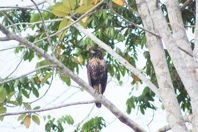
Juvenile Black
Hawk
(big image, small).
«Breakfast, and then another expedition on skiff at 0830. This time we saw sloths, 3 kinds of monkeys, more macaws, “caiman lizards”, Victoria water lilies, and again loads of birds.»
But let’s look at some pictures. The first four pictures, of macaws, were taken before breakfast. The second, third, and fourth are among the few pictures I took in which the clarity approaches acceptability.
Over on the right, you can see what the skiffs looked like. Seating for eight plus the pilot sitting in the back; often another staffer, usually one of the naturalists, might stand up front as well. The two bird pictures in that group are pretty much self-explanatory. The fourth picture is a glimpse of one of the river ferries that people can take to get around Amazonia. The cost of passage is not great, but the accommodations are not as elegant as those on the Delfin II.
| Short clip made at 7:30, driving across the Amazon. |
I said above that we saw sloths, and we did, but I didn’t get any pictures at all: they’re not the least bit cooperative. Nor did I get any good pictures of the monkeys we saw. The two pictures to the left of night monkeys are neither of them as good as the corresponding picture on Mark’s page, nor is my picture of the monk saki on the tree limb over there. It didn’t look one bit monkeylike from the angle we saw it from; I had thought it might be a kinkajou instead. But we didn’t see any of them at all.
An extremely interesting animal we got a good view of was a couple of caiman lizards. They’re only superficially like caimans, of which we saw one later on this evening. It’s the horny raised scales on the back that make you think of crocodilians; but one look at the face and the hands and feet tells you Lizard. Their fingers and toes are long and thin, compared to those of crocodiles, which have very stubby digits. That picture begins to show how long the tail is, but the shot of another individual over to the left shows the tail even better.
One thing I missed was any deep botanical information from the naturalists. Maybe the explanation is simply that while there are hundreds of species of animals here, there are tens of thousands of species of plants. But I was pleased that we made a special detour to see a stand of the famous Victoria water lily, the one with the leaves several feet in diameter. The right-hand shot is a closeup showing how eroded the leaves may get. They are very thin, and there is a complicated support structure, trussed and braced, to keep the leaves from crumpling and wrinkling from the winds. The result evidently is that they may keep their shape even as they get eaten by insects, and otherwise damaged, as here. That’s a Victoria flower above the images of the lily pads. The flower is large, but not in proportion to the foliage.
| In this video clip, we ∂rive through an Amazon byway (19 sec.) |
That’s it for the morning. So many pictures so far, I’ve decided to put the afternoon’s report on a separate page. Lots of pictures, I promise you, even though I start with a sizable lift from my journal.
| On my bed, towel origami presented to us on our return before lunch. A turtle? We think? |
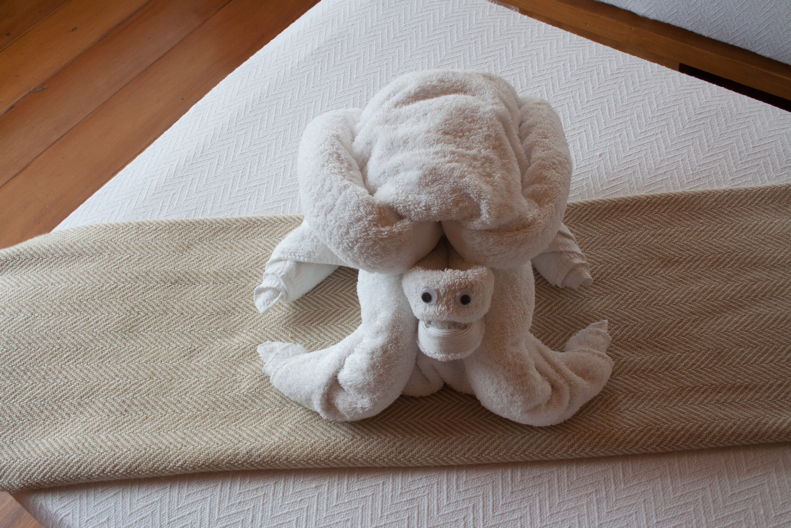
|
